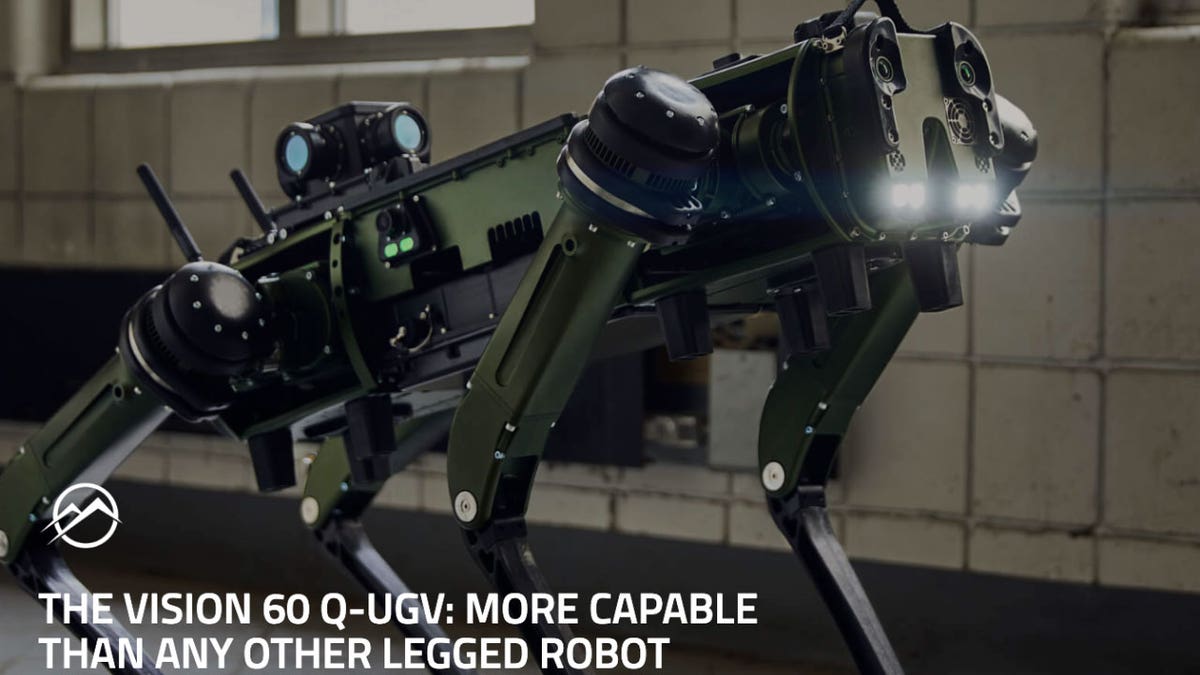Kurt 'The CyberGuy' Knutsson explains robodogs
Robodogs are being used by the Australian military and can even be controlled by soldiers' minds. Kurt "The CyberGuy" Knutsson explains how it works.
The age-old philosophical question, "who let the dogs out?" has finally been solved. Thanks to the help of Ghost Robotics and the Australian military, soldiers can now control robot dogs with their minds.
It sounds like something out of a sci-fi movie, yet it's happening right now while half the planet focuses on Pedro Pascal's impeccable performance on "Last of Us."
This isn't the first time we've seen robot dogs in action. They've been around for a few years, mainly in the form of Boston Dynamics' famous quadrupedal robots. These incredible machines can run, jump, climb and even dance with impressive agility and lifelike movements.
While Boston Dynamics' dogs have primarily been used for research and entertainment purposes, they've also caught the attention of law enforcement agencies worldwide.
APPLE'S CRUCIAL NEW IPHONE WARNING ABOUT POTENTIAL HEALTH RISK

Robot dogs being used by police departments for patrol services. (Boston Dynamics)
ARE YOU USING THESE EMOJIS CORRECTLY?
Robot dogs on the police force
Police departments in the U.S., Singapore and South Korea have already started using robot dogs in certain situations, such as bomb disposal, search and rescue operations, and crowd control. For instance, South Korea began integrating these mechanical beasts into their police force in 2018. They come equipped with cameras and sensors to detect suspicious behavior.
Singapore unleashed the four-legged robot dog onto the public to assist authorities with patrol services.
Here at home, these lifeless creatures were employed by the NYPD. The NYPD argued that the robot dog would be used for tasks such as inspecting suspicious packages or investigating hazardous environments and not to replace human officers. Ultimately, the department received harsh criticism and public backlash for its use of an inhuman tool within a police department that has received scrutiny for its police brutality.
U.S. MILITARY JET FLOWN BY AI FOR 17 HOURS; SHOULD YOU BE WORRIED?
Can these 4-legged bots be trusted?
Some critics worry that they could be used to intimidate and control us or that they could malfunction and cause damage or injury. Another significant worry is the possibility of someone with malicious intentions taking control of the robot dog and using it to cause harm to either the organization or the public. Others question the ethics of using robots in law enforcement, arguing that it could lead to a loss of accountability and human oversight.
Mind-reading tech lets you control these robot dogs with your thoughts
Now, if things didn't seem complicated enough, let's welcome the Australian military. While the world is toiling away with ChatGPT, Australia has significantly upgraded these metal K-9s. They've figured out a way for soldiers to control robot dogs with their minds. That's right; we're talking about some next-level stuff here.
HOW AMAZON'S LATEST FEATURE HELPS PREVENT BUYER'S REMORSE

The Australian army is rolling out with robodogs that have the ability to be controlled by the soldiers' minds. (Ghost Robotics)
How does the robodog work?
Using a high-tech biosensor headset, the robotic brain interface analyzes brainwave readings and feeds them from a person's visual cortex directly into the advanced "robodog." And the best part? It's apparently pretty easy to learn.
Sergeant Damian Robinson tested the HoloLens headset and said, "The whole process is not difficult to master, and it's very intuitive and only took a couple of sessions." The Hololens 2 headset, as it's called, is equipped with a Raspberry Pi-based AI decoder that intercepts brain waves and "converts them into helpful directives that are then telepathically transmitted to the autonomous robot dog."
Robinson and his fellow soldiers got to try out the mind-reading headsets and robodogs during course training, where they were able to navigate the robodogs through tough terrain and even bad weather on a makeshift battlefield. The secret to controlling the bots? Flickering beacons that act as waypoints are perceived as augmented reality in the headsets. Robinson explains, "You don't have to think anything specific to operate the robot, but you must focus on that flicker. It's more of a visual concentration thing."
ROBOTS ARE REPLACING SECURITY GUARDS. SHOULD WE GIVE THEM GUNS?
Should robodogs with cameras be deployed to surveil American cities?
With the Australian military's latest development, it's clear that the possibilities of robotics and artificial intelligence are only continuing to grow. As with any new technology, however, there are certainly concerns about its ethical implications, mainly when using robots in law enforcement. It's essential to balance the benefits of this technology and the potential risks it poses to society to ensure the safety of all of us. Perhaps implementing regulations and guidelines when using robots in law enforcement could ensure accountability and prevent misuse.
Additionally, involving diverse voices in developing and deploying these technologies could mitigate potential biases and ensure they serve the greater good. Whatever the case, these safety guardrails will become necessary if government authorities continue to deploy these mechanical beasts in public.
CLICK HERE TO GET THE FOX NEWS APP
For more of my tips, subscribe to my free CyberGuy Report Newsletter by clicking the "Free newsletter" link at the top of my website.
Copyright 2023 CyberGuy.com. All rights reserved.










































